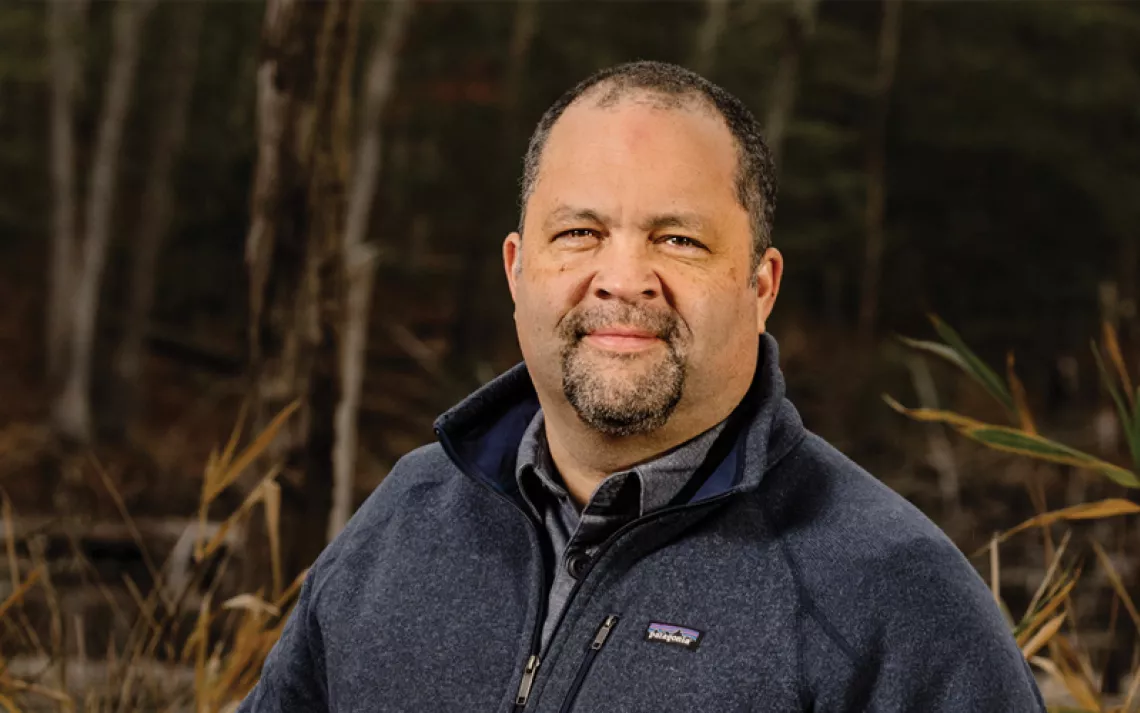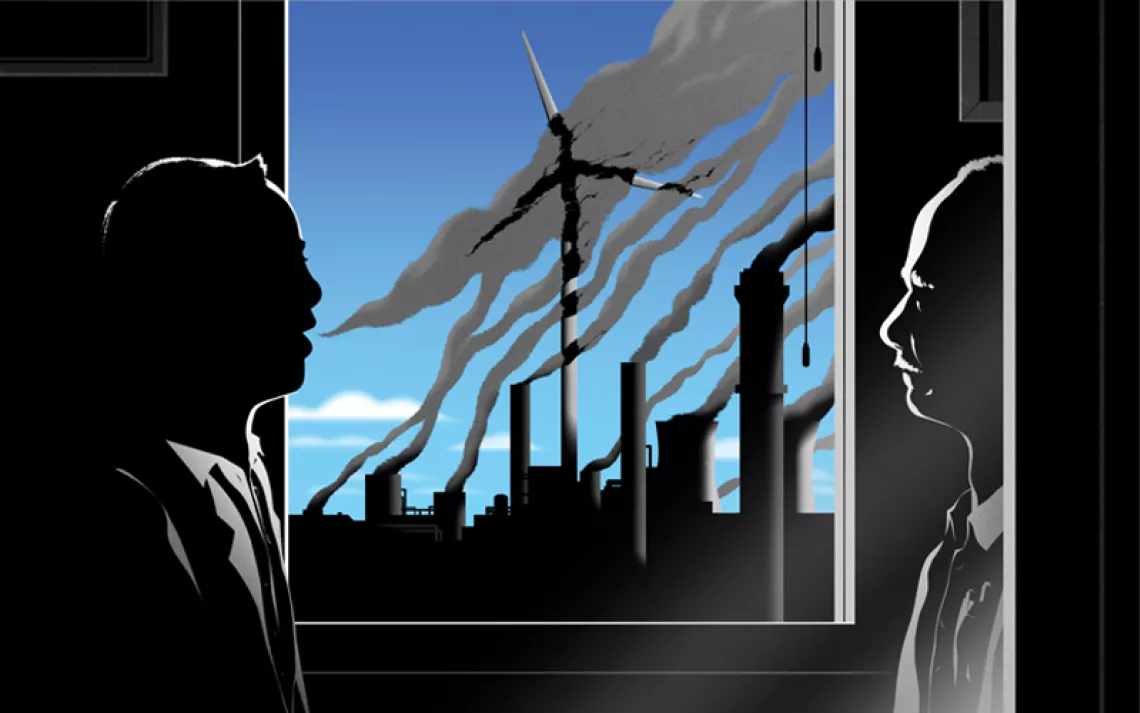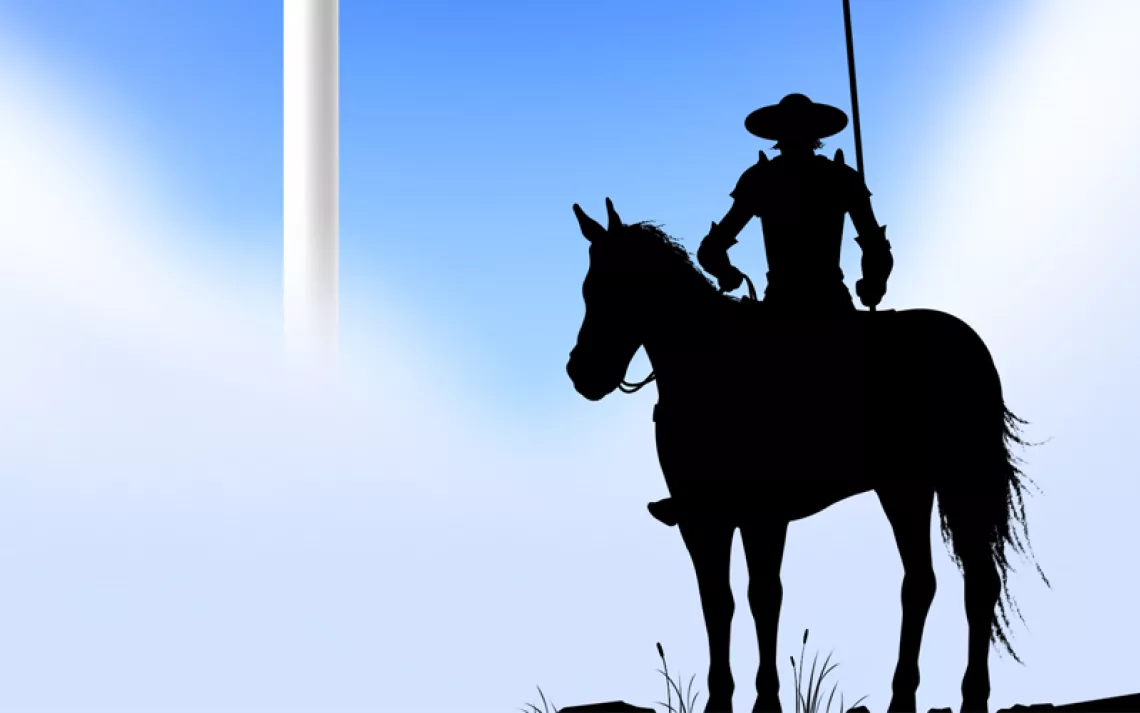Teaching Students About Real-World Wind Power
A Kansas science instructor focuses on wind turbines

Teacher Eryn Norton Moland used a Sierra Club grant to build wind turbines at Perry Lecompton High School in Kansas. | Photo by Earl Richardson
- Name: Eryn Norton Moland
- Location: Lawrence, Kansas
- Contribution: Used a Sierra Club grant to build wind turbines with sophomores at Perry Lecompton High School
You received an education grant from the Sierra Club Kansas Chapter. What did you do with it? I purchased kits so that students in my Earth, Space, Science classes could design wind turbines. First, they had to decide if they wanted three or four blades. Then they messed around with the shape and the angle at which the blades were pitched.
What did they do with the wind turbines they built? The students used them to figure out the best spot around Perry for generating wind energy. They realized that the high school is too low-lying and that they needed to go north of Perry Lake.

A high school student checks out a miniature wind turbine. | Photo by Eryn Norton Moland
What was the takeaway? It was a chance for the students to build, to use their hands. It was, "Here's the equipment. Here is your problem. Go solve it." They got to work on a real-world issue in their area. What if we needed to rely on alternative energy? We talked about fossil fuels—how much we're using and how much is left.
Did you make an explicit connection to climate change? This is a very conservative area, so we have to broach that topic sensitively. It's about getting students to connect what we do with what we are seeing in the environment and how alternative energy could help. We don't make huge waves; we make little ones.
Why did you decide to become a teacher? I come from a long line of teachers—my great-grandmother, my grandmother, my dad, my stepmom. In high school, I had a wonderful science teacher who really turned me on to science and the idea of teaching it to others.
Women are underrepresented in science. What's that like for you? In our district, I am the only female science teacher. As a physics major, I had a couple of female classmates, but they weren't in my grade. In the seven years that I've been at Perry Lecompton High School, we have definitely seen an increase in females taking upper-level science courses.

Eryn Norton Moland teaches her students about renewable energy. | Photo by Eryn Norton Moland
What do you do when you're not teaching science? I have a little girl. We go to the zoo or to a nearby farm. She asks a lot of "why" questions. I'm very proud of those "why" questions. Just last night at the dinner table, she noticed that there was water on the outside of her glass. She said, "Wet. Why?" So we talked about condensation. I thought, "I'm telling this to a two-year-old." Someday she'll get it.
The Kansas Chapter of the Sierra Club awards a handful of grants annually to K-12 teachers in Kansas schools to help them instruct students about topics related to climate change. Any teacher in any subject may apply. One of this year’s five recipients will use the funds to purchase an earthquake simulation table to demonstrate the connection between hydraulic fracking and earthquakes. Another recipient will produce a video with her second graders tracing the path of recycled materials. To learn more, visit http://kansas.sierraclub.org/projects/climate-change-education-grants/.
This article appeared in the September/October 2016 edition with the headline "Real World Wind Power."
 The Magazine of The Sierra Club
The Magazine of The Sierra Club



